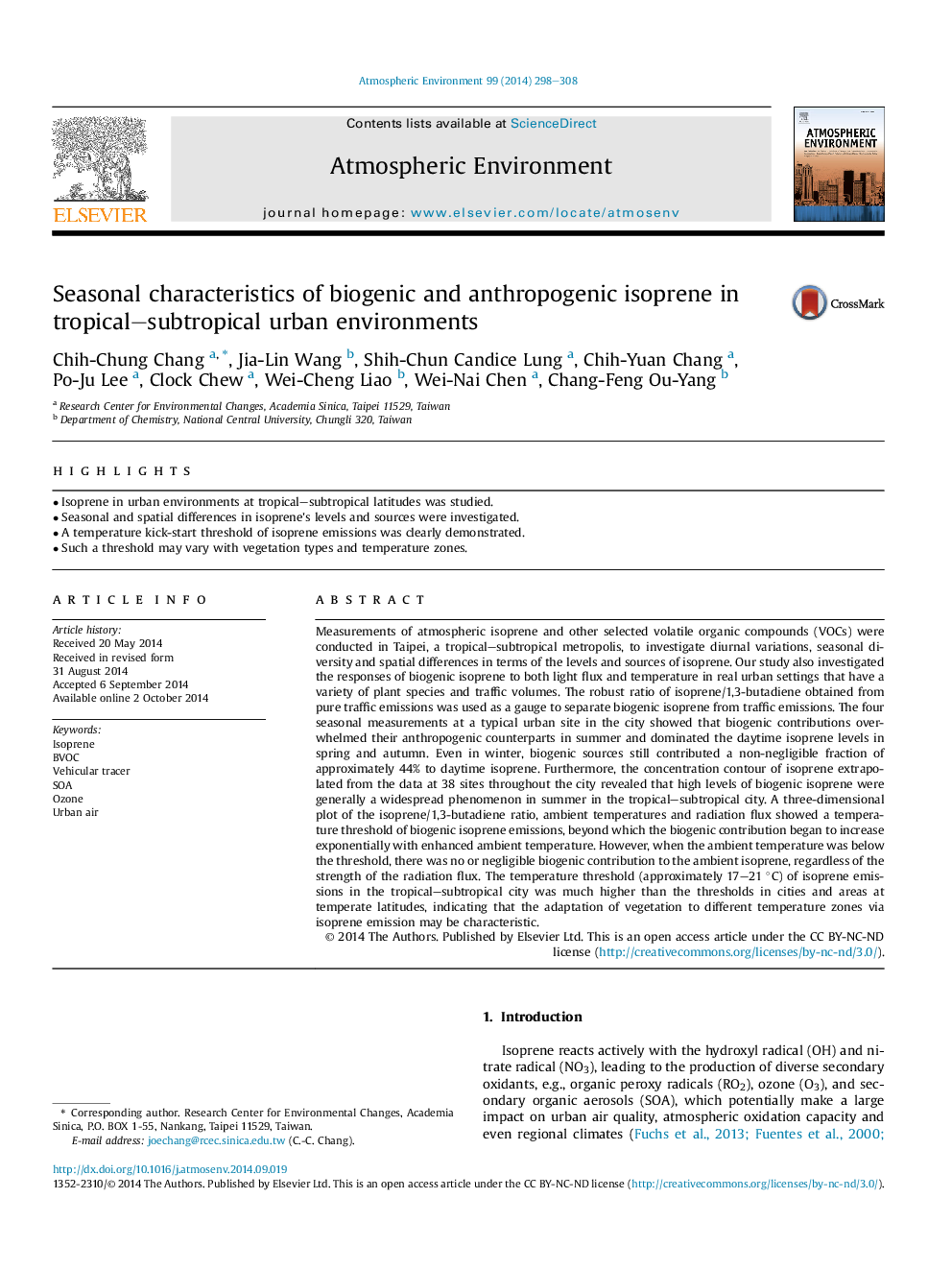| کد مقاله | کد نشریه | سال انتشار | مقاله انگلیسی | نسخه تمام متن |
|---|---|---|---|---|
| 6339124 | 1620372 | 2014 | 11 صفحه PDF | دانلود رایگان |
- Isoprene in urban environments at tropical-subtropical latitudes was studied.
- Seasonal and spatial differences in isoprene's levels and sources were investigated.
- A temperature kick-start threshold of isoprene emissions was clearly demonstrated.
- Such a threshold may vary with vegetation types and temperature zones.
Measurements of atmospheric isoprene and other selected volatile organic compounds (VOCs) were conducted in Taipei, a tropical-subtropical metropolis, to investigate diurnal variations, seasonal diversity and spatial differences in terms of the levels and sources of isoprene. Our study also investigated the responses of biogenic isoprene to both light flux and temperature in real urban settings that have a variety of plant species and traffic volumes. The robust ratio of isoprene/1,3-butadiene obtained from pure traffic emissions was used as a gauge to separate biogenic isoprene from traffic emissions. The four seasonal measurements at a typical urban site in the city showed that biogenic contributions overwhelmed their anthropogenic counterparts in summer and dominated the daytime isoprene levels in spring and autumn. Even in winter, biogenic sources still contributed a non-negligible fraction of approximately 44% to daytime isoprene. Furthermore, the concentration contour of isoprene extrapolated from the data at 38 sites throughout the city revealed that high levels of biogenic isoprene were generally a widespread phenomenon in summer in the tropical-subtropical city. A three-dimensional plot of the isoprene/1,3-butadiene ratio, ambient temperatures and radiation flux showed a temperature threshold of biogenic isoprene emissions, beyond which the biogenic contribution began to increase exponentially with enhanced ambient temperature. However, when the ambient temperature was below the threshold, there was no or negligible biogenic contribution to the ambient isoprene, regardless of the strength of the radiation flux. The temperature threshold (approximately 17-21 °C) of isoprene emissions in the tropical-subtropical city was much higher than the thresholds in cities and areas at temperate latitudes, indicating that the adaptation of vegetation to different temperature zones via isoprene emission may be characteristic.
Journal: Atmospheric Environment - Volume 99, December 2014, Pages 298-308
